Karimabad – Wedding
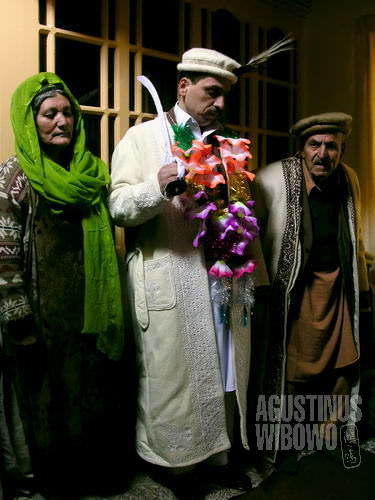
Prepared to bring the bride home
Being delayed is not always bad. The road to Pindi has been blocked for more than a week now, and I am still in Karimabad. I have heard the rumours that Mr. Karim’s brother was going to marry. So 2 days ago I visited him. Mr Karim was busy, preparing for the feasts and everything. He offered me sharbat (the traditional food for 2 days before marriage, made from flour) but I felt he tried to send me home politely as he couldnt entertain me due to his business.
From him, I learnt about the tradition of the wedding in Hunza. The ‘nikah’ will be held in bride’s side, in the nearest jamaat khana from the bride’s house. For this, the bride side invited 40 people from the groom side. These 40 people, mostly relatives, were carefully selected and counted. As we might know, the families in Pakistan are all big, that 40 is a very limited number. It seems that the culture is quite closed for outsiders, that I probably might not be able to join the whole procession.
As he was busy in this sunny bright day, I went together with him to cut the trees in his field, then asked permission to leave.
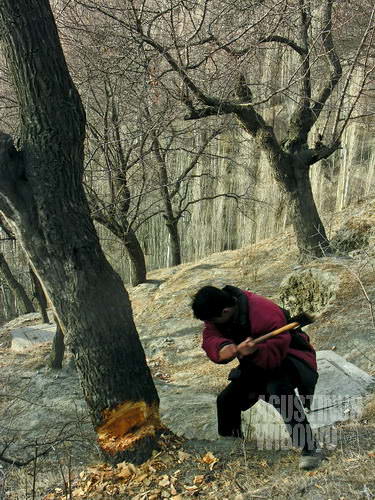
Trees are cut for the wedding
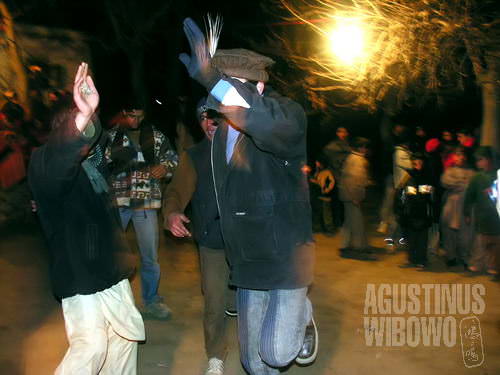
Tamasha
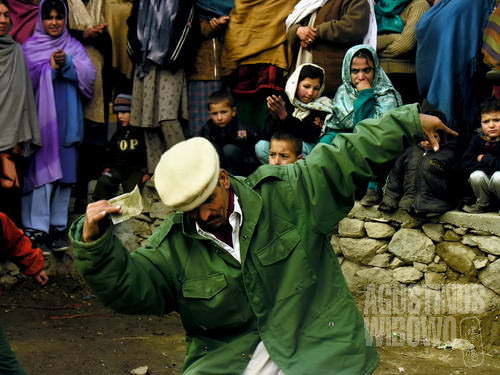
Men dance, women just watch
The next day (one day before procession) there was tamasha in the groom;s house. The groom is Karim’s elder brother, Amin Khan, owning a restaurant in Altit. The tamasha is traditional music program, there were 3 musicians each with different traditional instrument. The tamasha was held outdoor, in the middle of cold winter night. The people around the neighbourhood were coming to join. Men came to dance. In the local tradition, only males are allowed to dance. The local females were just watching. Children throwing firecrackers to the central ground, to the middle of the dancers. The Hunzai dance, mostly in slow, motonous and stopping motion, but sometimes can be fast and energetic. The movement was in circular motion at first when the important persons (elders from the groom family) dancing, looks more like religious event. But when the tamasha went wild, with the Hunza pani (local alcohol) filling the atmosphere, the dances also became more free and energetic.
I was invited to have dinner with the elderly of the groom’s side. It was pullao and mutton curry, with distinctive taste from what you will get from restaurants. After long chat, suddenly I was offered the invitation to join the troop from the groom’s side to Hassanabad, to the bride’s house. Yes, they put me in that 40 guest list (appparently it grew to be 50). It was indeed a rare ocassion for outsiders to join the procession.
It was also a confusing discussion of relative terms. A guy insisted that his sister’s husband is his sister-in-law, while me, a little bit undoubtful about my English vocabulary, insisted that he should call him brother-in-law. The dance in the ground was held until midnight, incredible, considering the cold weather in the middle of winter. And of course the noise from the music probably might interfene others’ sleep.
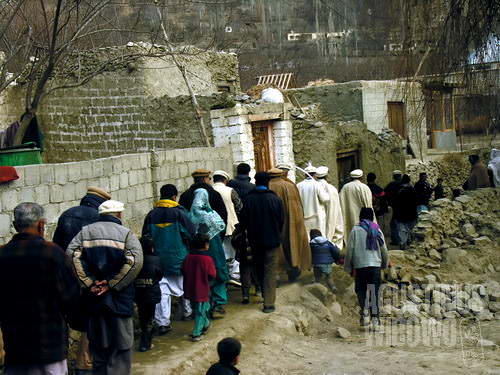
Long parade to the bride’s house

Curious crowds
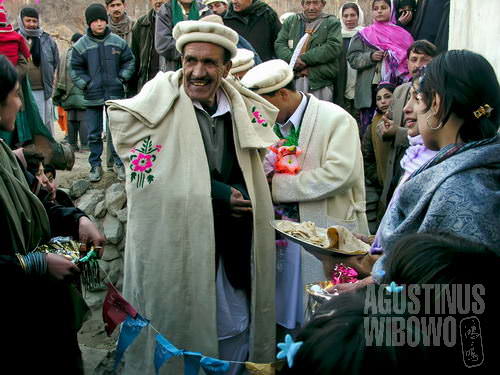
Arrival in the bride’s house
The next morning (today) I started early to the groom’s house. It was an incredibly sunny day, with strong wind though. The elderlies told me to come at 9, I came at 9:15. A little bit too early, as I was the first guest. I was offered to have breakfast, chapati and bread, plus the salty milk tea, while waiting for other bharatis (people going together with bharat). Bharat is the parade of the groom.
The dress of the groom is simple white cloak, with with cap plus feather. The groom was dressed by the khalifa, the man from local Jamaatkhana. The khalifa then read the du’a (prayer) for the groom, and the family will bring this khalifa from Karimabad to Hassanabad (the bride’s house) for ‘nikah’.
Before the departure of the bharat (11 am), the groom and the elders went to the ground and start dancing. The women all watching. Banknotes were spread around during the dance, and firecrackers blasting everywhere. The arena became colourful just in a second, as many people (mostly women and children) from the neighbourhood gathered to join the crowds.
The bharat, used to be transported by horses, now use jeeps and suzukis instead. Hassanabad is 10 kms away from Karimabad, and these 50 people in guest-list departing together. The village of the bride is located on another hill somewhere away from Aliabad. The nikah was held in Hassanabad local jamaatkhana, led by the muki (the highest imam in jamaatkhana). So the muki is from Hassanabad and khalifa from Karimabad. The procession itself is not visible for non-Ismailis and no photos/filming allowed inside the jamaatkhana.
The wedding ceremony in simple words is like this:
1. The groom with khalifa going with the invited guests to the bride’s place.
2. Nikah in bride’s local jamaat khana
3. The guests from groom side are entertained
4. The groom brings the bride with him, to go back to his village, along with his guests and invited guests from the bride’s side
5. The bride’s guests are entertained in groom’s house. The food is exactly the same as what was served in bride’s house
6. Dancing and mahfil starts
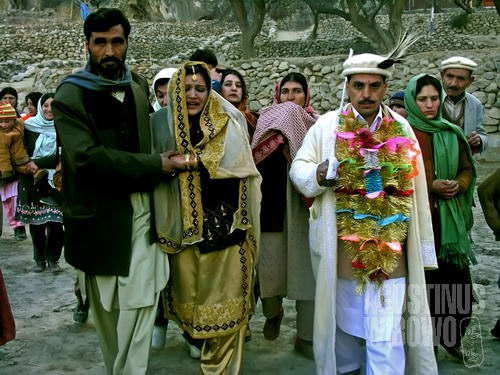
Bride’s tear is customary in Pakistan wedding
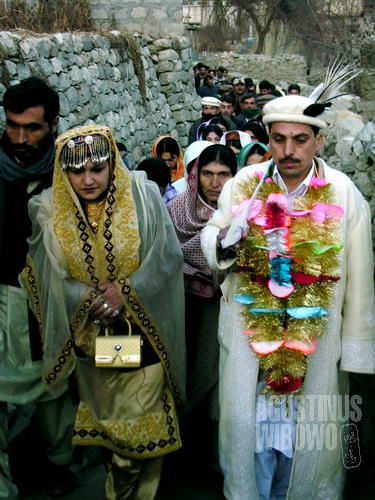
The tear has stopped
The bride, apparently was not prepared for leaving her house, cried loud when it was the time for her to go with the groom. The cry was very loud, that suddenly changed the atmosphere of the celebration. The bride was forced to enter her car, she didnt sit together with her groom, even though they are already married now.
There were 60 people invited from the bride’s family by the groom side. But 80 people coming. It was a busy work to entertain all of the guests, and I did help by joining the food distributor team. The bride, still sobbing, was entertained by dances by the groom and some men from her family.






“It seems that the culture is quite closed for outsiders, that I probably might not be able to join the whole procession.” Oh ya?
I knew yo’re going to be invited, just before I read the next sentences 😀
Its such as You, Mas Agus!